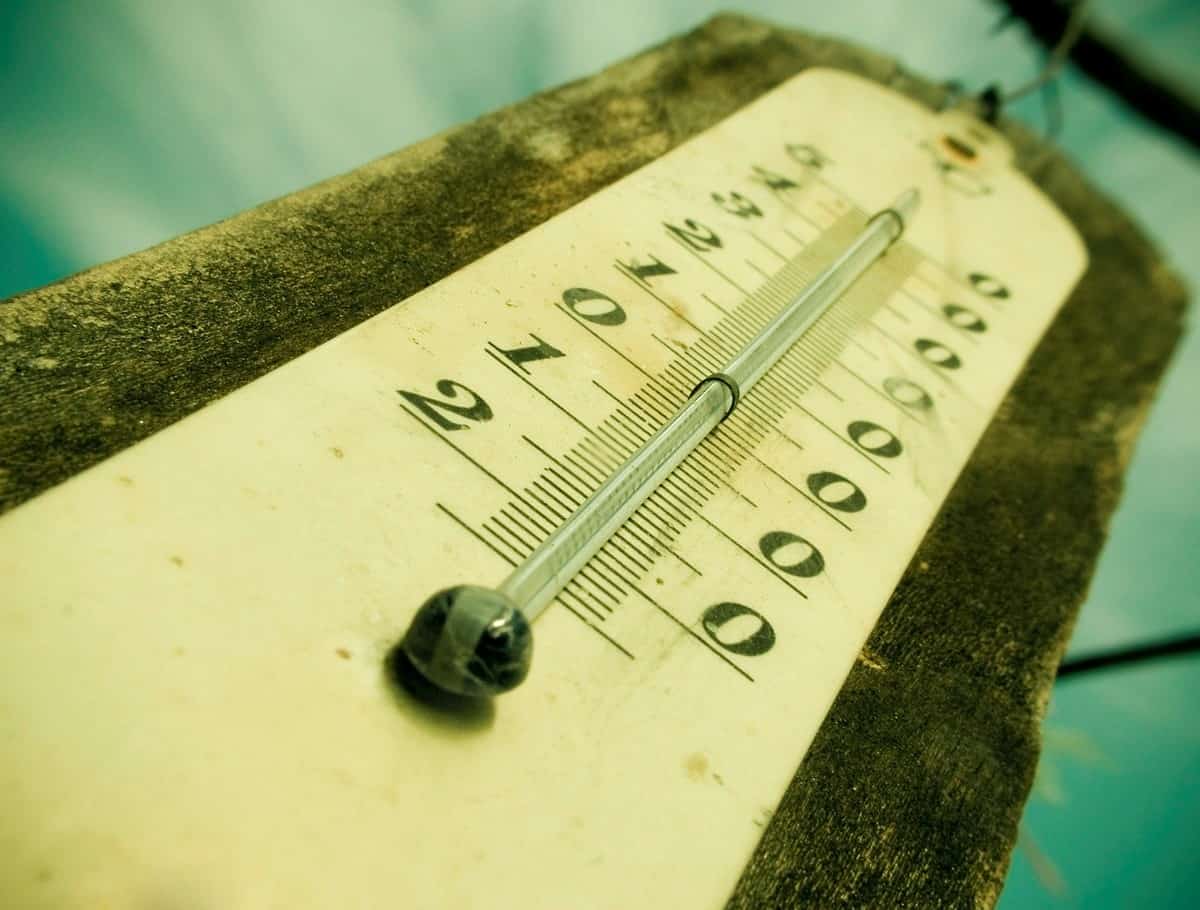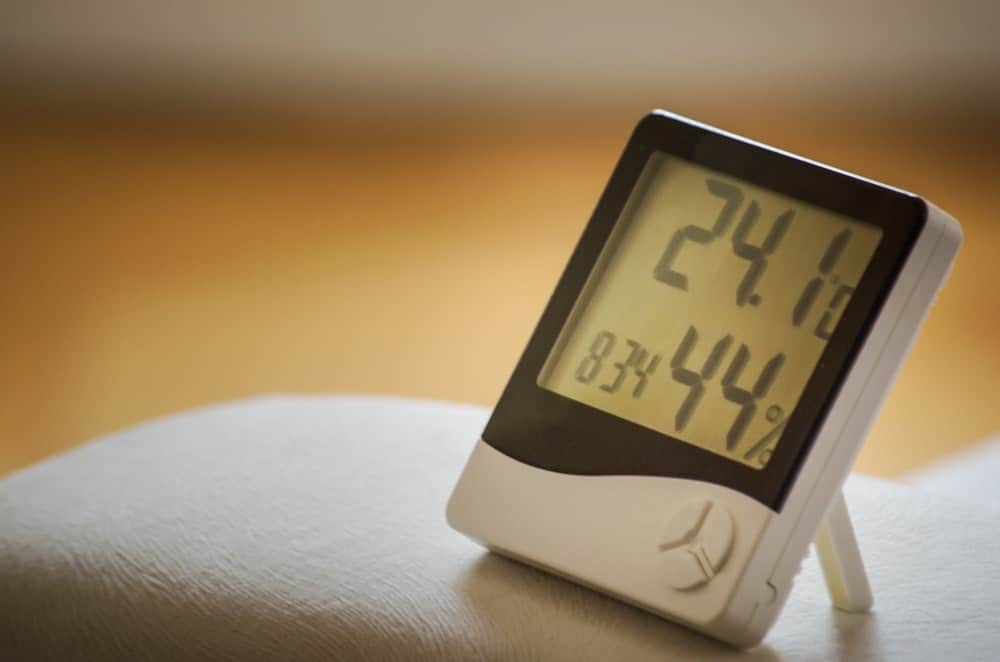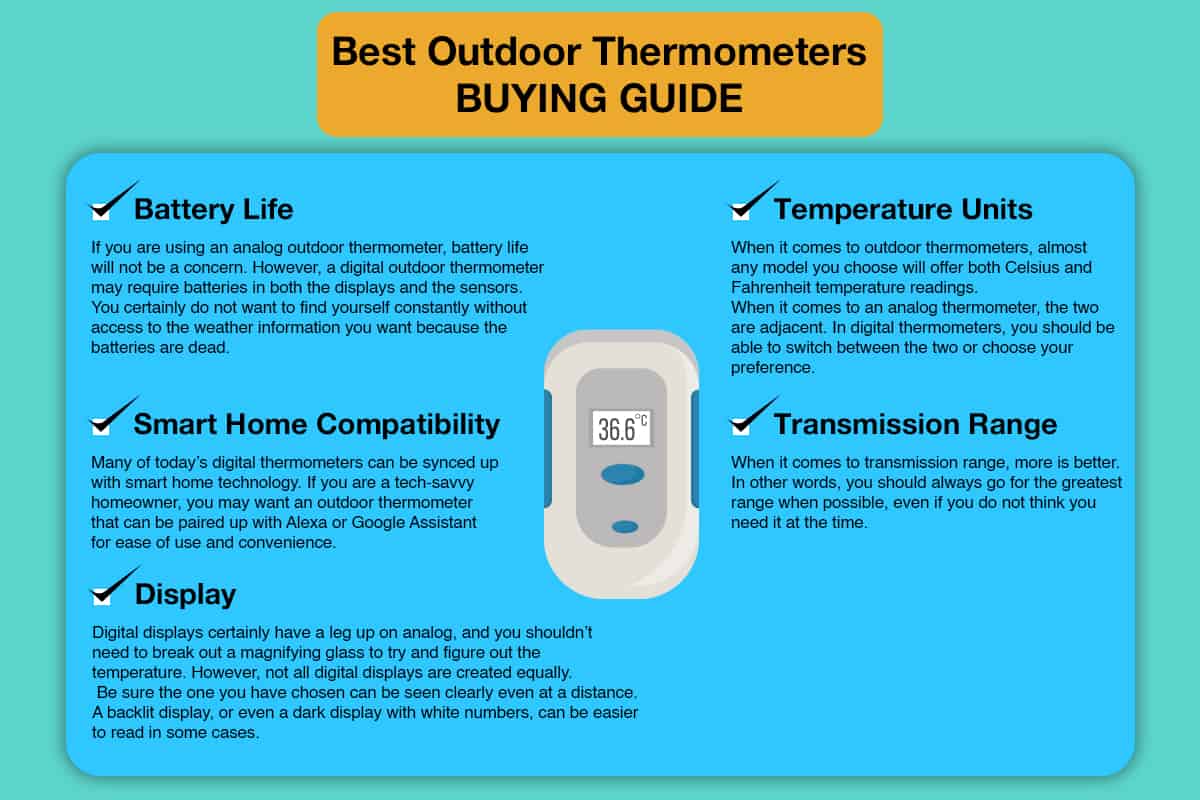Ranking The Best Outdoor Thermometers of 2024
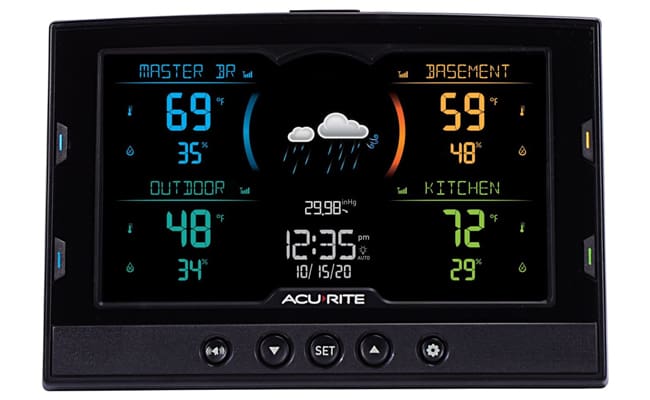
Best Overall - AcuRite Home Temperature and Humidity Station
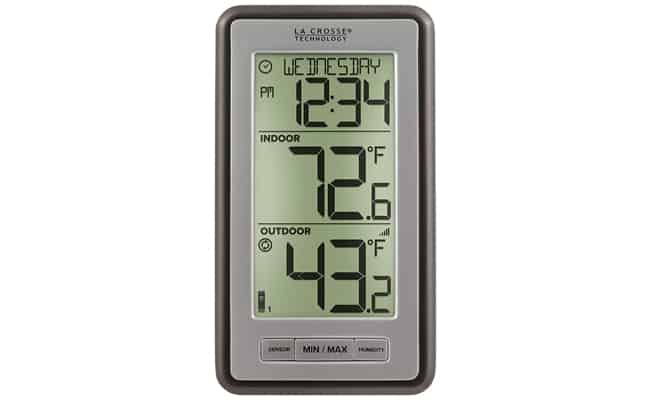
Best Budget - La Crosse Technology Indoor / Outdoor Thermometer
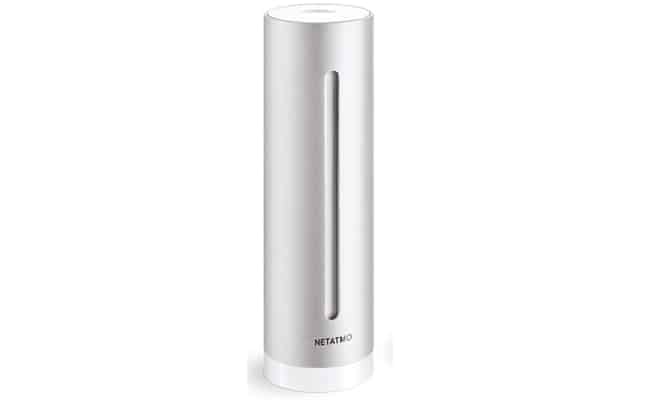
Best Premium - Netatmo Weather Station Indoor Outdoor
In an age where handheld devices seem to be the answer to our every need, you may think of an outdoor thermometer as a bit of an ancient relic.
However, today’s outdoor thermometers are not only modern in their technology, but they are still the preferred option for accuracy. Ask any “weather nerd,” and they will tell you a good outdoor thermometer is an absolute must.
Outdoor thermometers provide a convenient way for you to check the immediate local temperature and other measurements, such as humidity. For some, this information is more like a hobby, and these gadgets are a fun way to keep up to speed with weather patterns and trends.
They are also practical devices for those who need to plan outdoor activity, be it vegetable farming, cross country training, or pressure washing a driveway. Whatever the activity or task is you are planning for the outdoors, a good outdoor thermometer is a tool you need at your disposal

Our Top Six Picks for Outdoor Thermometers
If you’re ready to purchase an outdoor thermometer, one that will help you begin each day by deciding whether or not it would be appropriate to call in sick and pack your beach bag instead, take a look at our favorite picks below.
Best Overall - AcuRite Home Temperature and Humidity Station
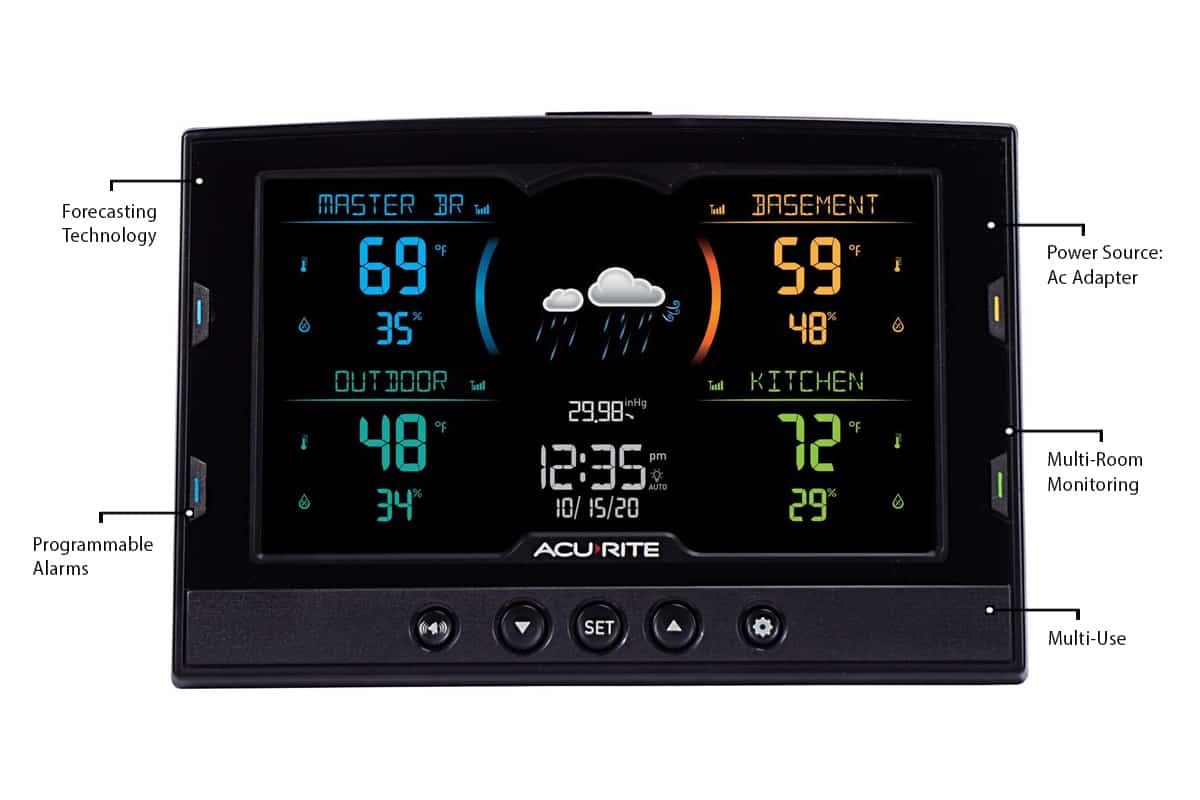
If you have multiple areas you want to monitor, the AcuRite Home Temperature and Humidity Station will more than meet your needs. A bright, clear display is easy to read and allows you to review temperature and humidity data from up to four locations.
Users can set alerts for each sensor to let you know when the temperature or humidity has fallen outside of a set range. The date and time, barometric pressure readings, and a weather forecast are also available on display. This system packs a lot of punch at a reasonable price point.
Best Budget - La Crosse Technology Indoor / Outdoor Thermometer
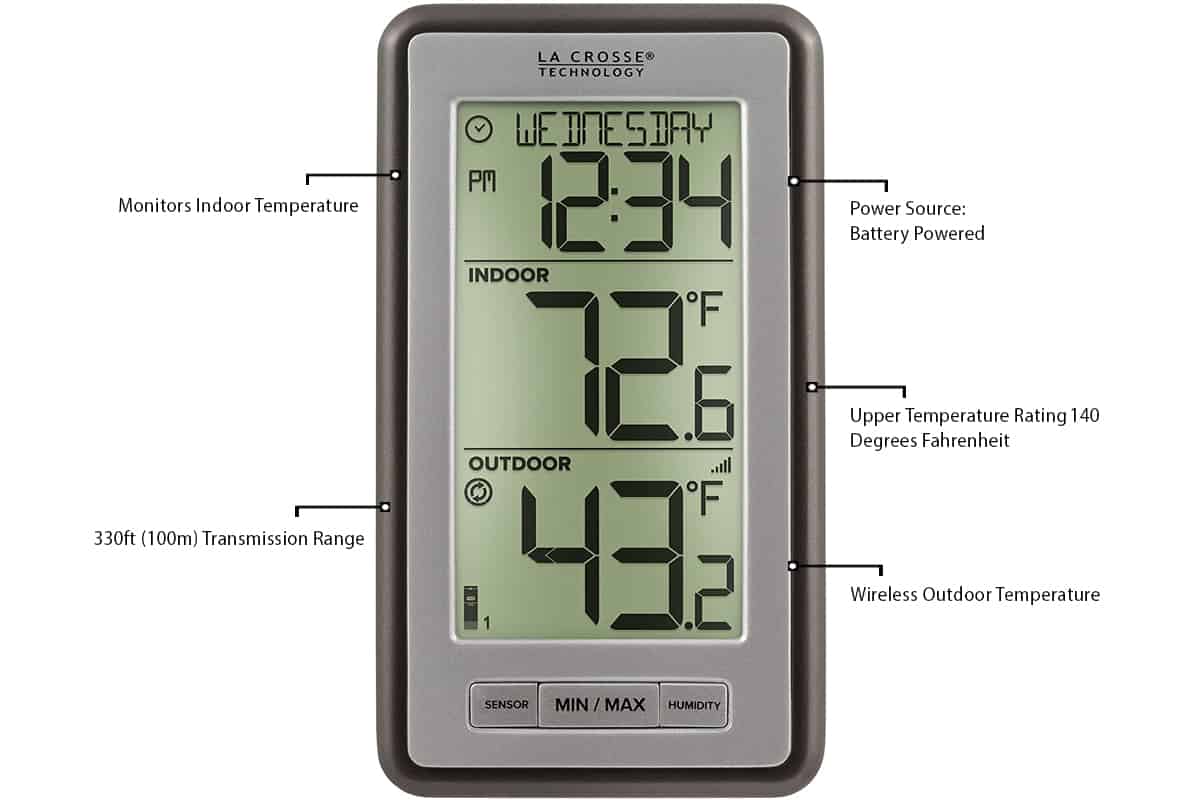
One of our favorite thermometers for its use of technology coupled with a sleek and easy display, the La Crosse boasts an impressive 330-foot transmission range.
For less than $50, this thermometer comes with a wireless remote and receives data from three sensors. For the outdoor transmitter, you will need to supply two AA batteries, and the unit has an indicator to let you know when the batteries are weak, so you can change them before they run out completely.
The calendar display can be customized (or turned off altogether), and we also give this display high marks for readability.
Best Premium - Netatmo Weather Station Indoor Outdoor
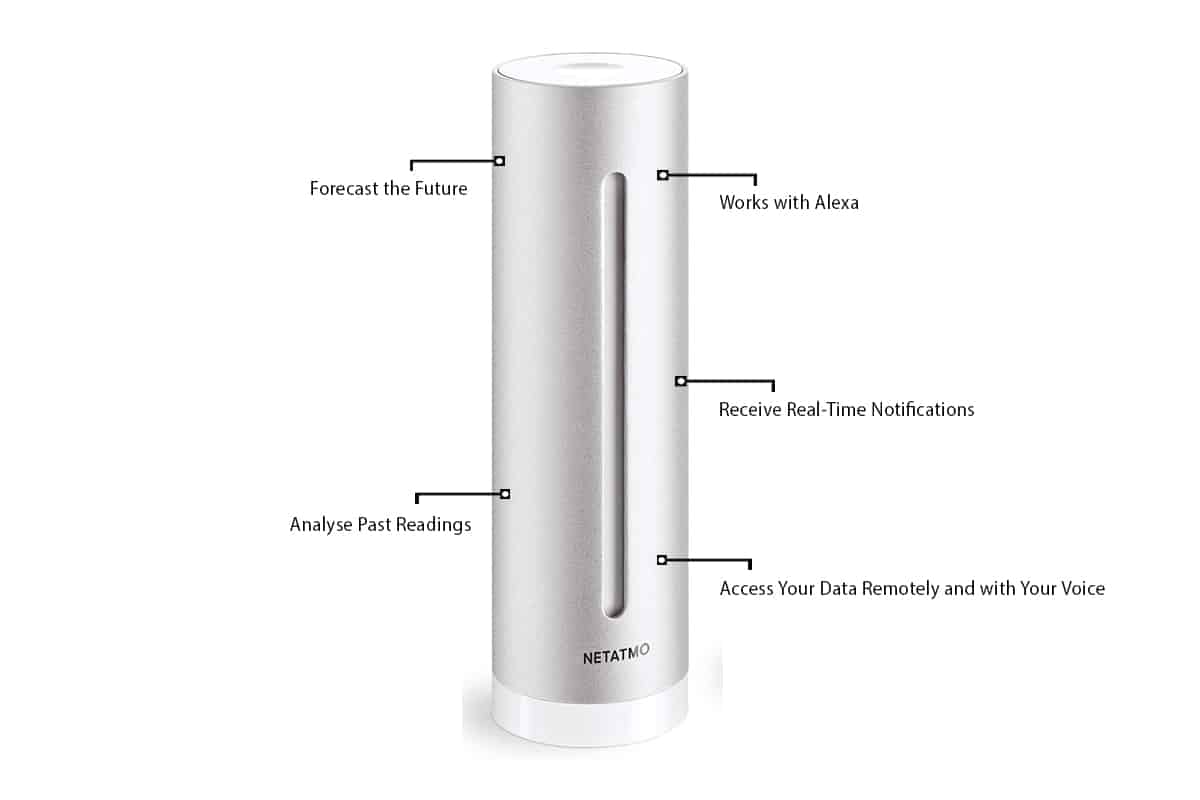
For those with fewer budget restrictions and a love of smart home technology, this weather station from Netatmo pairs with your existing devices to create a sophisticated monitoring system.
The Netatmo system allows users to measure and monitor temperature, humidity, air quality, and even indoor noise levels. While away from home, you can still access the data on your phone or other devices, and users can also set up customizable alerts, such as a “ventilation alert,”
Taylor Precision Products Indoor/Outdoor Thermometer
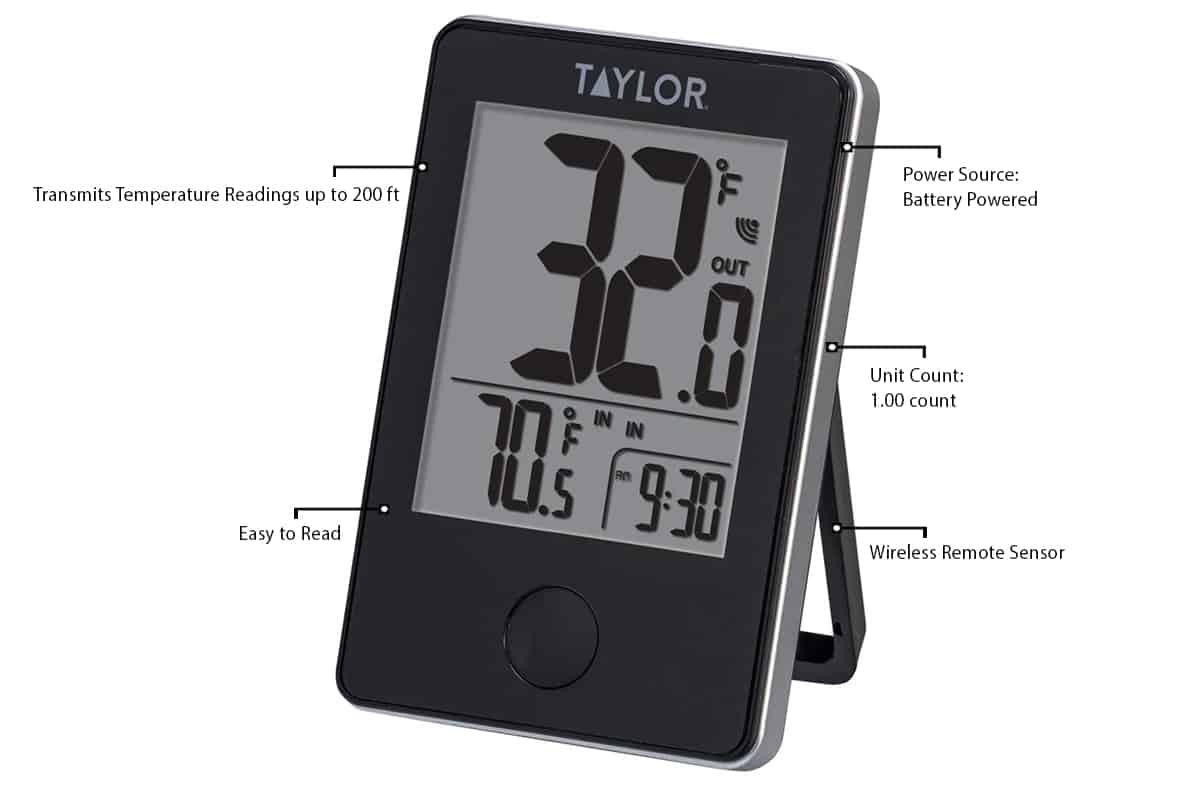
One of the best choices for the budget-conscious shopper, the Taylor Precision Products Indoor/Outdoor Thermometer offers a quality temperature read at a price point under $20.
This thermometer provides a daily minimum and maximum temperature recall, transmission of up to 200 feet, a built-in clock, and large, easy-to-read digits. The Taylor Precision Products model is a great outdoor thermometer for those who are not especially tech-savvy and want a reliable and basic digital option.
ThermoPro TP62 Digital Indoor Outdoor Thermometer
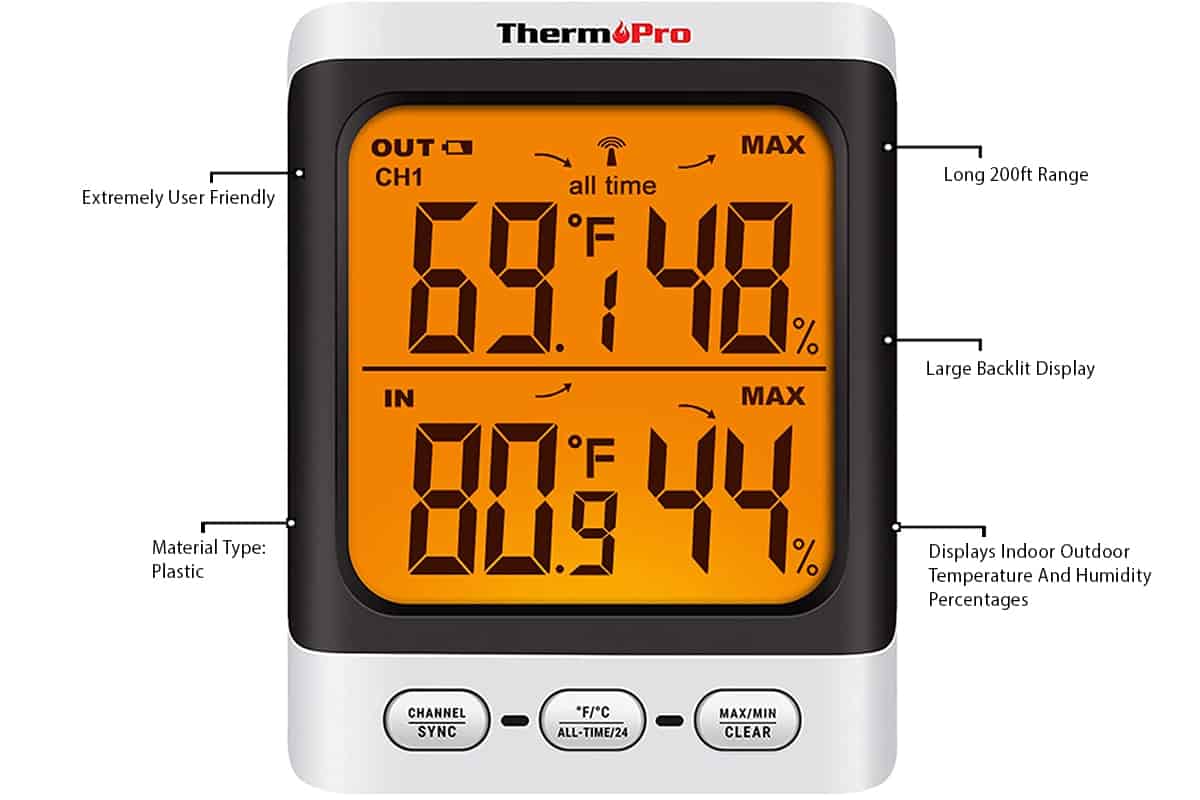
Another budget-friendly choice in the outdoor thermometer market, the ThermoPro TP62 Digital Indoor Outdoor Thermometer makes our list as it provides a tremendous amount of value without breaking the bank.
This digital thermometer has a 200-foot transmission range and three sensors, so users have the opportunity to monitor several locations. We especially love the touch sensitive display, which means once you tap your finger on the display, the orange light is activated and the numbers are easier to read.
A memory feature means you have access to the minimum and maximum temperatures, and the sensors are able to read humidity as well as temperature. The ThermoPro packs some great features into a small package (with a small price tag to boot).
Wittime 2079 Indoor Outdoor Thermometer
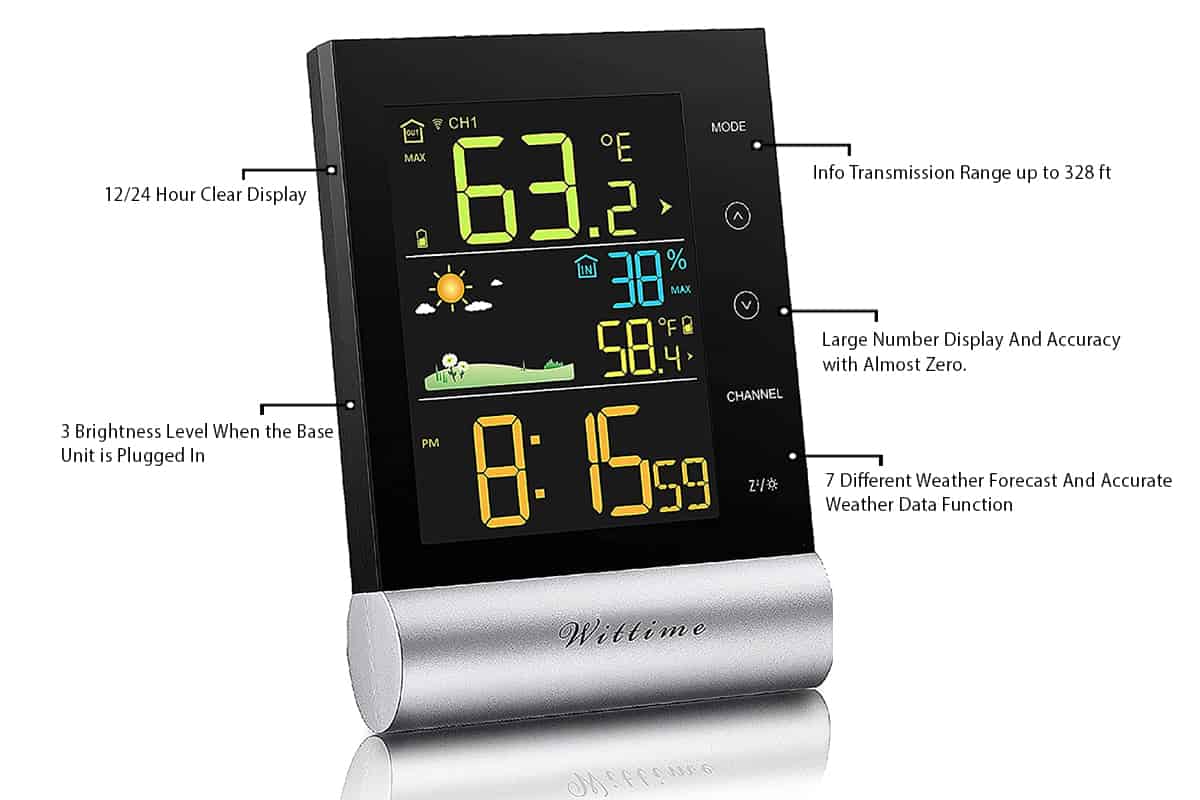
Last but not least, the Wittime 2079 Indoor Outdoor Thermometer boasts one of our favorite displays along with an impressive 328-foot transmission range. It comes with a power adaptor and five batteries, and we also appreciate the power-saving feature of a screen that cuts off periodically.
This thermometer can be wall mounted or used on a stand and includes time and date, weather forecast graphics, and humidity measurements in addition to temperature readings.
The Wittime even includes an alarm clock with a snooze function, making it a true multi-tasking gadget for any home.
What Are the Main Types of Outdoor Thermometers?
When you hear someone mention a “garden thermometer,” they likely mean a simple, vertical analog gadget. And those do still exist! But there is also a wide range of other options available when it comes to outdoor thermometers.
Today’s outdoor thermometer market includes choices that display temperature and include forecasts, time and date displays, and more. When shopping for a new outdoor thermometer, you will see these different types available:
Analog Outdoor Thermometers
An analog thermometer is the “old-fashioned” one: think of the thermometer graphic you might see on a poster, with a red line indicating the rising temperature. Older generations will remember their parents struggling to read these kinds of thermometers when checking a child for a fever (thank goodness we live in the digital thermometer age to measure human temperatures now!)
The analog method still works, though (and many cooks swear by them); you will still see outdoor thermometers that rely on the use of thermosensitive liquid to measure temperature.
They may appear in the same vertical line display you picture on an old-fashioned thermometer, or in some cases, they may resemble a clock, where the hand on the clock is moving to display temperature rather than time.
Digital Outdoor Thermometers
Because we are used to digital displays everywhere, from our phones and watches to our microwaves and our cars, it is no surprise that outdoor thermometers would evolve to digital as well.
Digital issues certainly offer a sleek and smart design and great visibility with backlit displays; however, sometimes technology can be its own worst enemy: on occasion, you may find they have problems with transmission or electronic issues that simply do not come up with their analog counterparts.
Direct Read Outdoor Thermometers
As the name implies, this thermometer displays the temperature directly on the unit you have mounted outside. The sensor and display unit are the same; users are cautioned to mount these in places shielded from rain and excessive wind to prevent damage.
Remote Read Outdoor Thermometers
For the ultimate in convenience, you simply cannot beat the setup of a remote reading thermometer. These are designed so that the sensor is located outside and communicates with an indoor display unit. Want to know the outdoor temperature as soon as you roll out of bed, while you are brushing your teeth or pouring that first cup of coffee?
The indoor display could be perched right next to your toothbrush stand or coffee pot, ensuring you have easy access to not only the temperature but, in some cases, barometric measures and humidity readings. Once again, the fine print is that “high tech” can sometimes mean “high maintenance:” these kinds of thermometers can have problems with range and wireless connections.
What Should I Consider Before Purchasing an Outdoor Thermometer?
Now that you know a little more about the types of outdoor thermometers available, we will explore the different items you should consider before purchasing one.
Battery Life
If you are using an analog outdoor thermometer, battery life will not be a concern. However, a digital outdoor thermometer may require batteries in both the displays and the sensors. You certainly do not want to find yourself constantly without access to the weather information you want because the batteries are dead.
A good digital thermometer should have an efficient enough design that you only need to replace the batteries a few times a year. One of the best ways to weed out any thermometers with battery life issues is to read the customer reviews. If the batteries drain too quickly, you will definitely see this complaint in an online review!
Smart Home Compatibility
Many of today’s digital thermometers can be synced up with smart home technology. If you are a tech-savvy homeowner, you may want an outdoor thermometer that can be paired up with Alexa or Google Assistant for ease of use and convenience.
Display
The quality of the display is one of the most important features of an outdoor thermometer. After all, what good is the information if you cannot see it?
Digital displays certainly have a leg up on analog, and you shouldn’t need to break out a magnifying glass to try and figure out the temperature. However, not all digital displays are created equally. Be sure the one you have chosen can be seen clearly even at a distance. A backlit display, or even a dark display with white numbers, can be easier to read in some cases.
Temperature Units
When it comes to outdoor thermometers, almost any model you choose will offer both Celsius and Fahrenheit temperature readings.
When it comes to an analog thermometer, the two are adjacent. In digital thermometers, you should be able to switch between the two or choose your preference.
Transmission Range
When it comes to transmission range, more is better. In other words, you should always go for the greatest range when possible, even if you do not think you need it at the time. Perhaps the digital thermometer sensor and its corresponding display unit will only be placed a few feet apart in your current home—the distance from your back steps to your kitchen counter.
But you may end up using it in a completely different setting in the future: with the sensor at a greenhouse located 50 feet away from your mudroom.
The transmission range offered in a digital outdoor thermometer could be as few as three feet or as many as 350 feet.
What Do I Need to Know About Outdoor Thermometer Programming and Calibration?
Like scales, most thermometers need to be calibrated from time to time to ensure the accuracy of measurements. (Just ask any dieter who forgot to calibrate a bathroom scale about the disappointment in the doctor’s office when realizing he’d only lost three pounds and not 13!)
While the manufacturer instructions that came with the thermometer should outline the calibration method, in a pinch, you can also try one of these:
- Pour tap water into a drinking glass with some ice cubes. After it sits for a few minutes, insert the probe from your outdoor thermometer. It should read (you guessed it) 32 degrees Fahrenheit.
OR
- Boil water and then carefully insert the probe from your outdoor thermometer, and it should read 212 degrees Fahrenheit.
If your reading is 35 degrees in the first scenario, you might then make a mental note that your thermometer is three degrees off.
Some digital outdoor thermometers will come with a reset button for calibration, which is a handy feature you should prioritize among your choices.
Where Should I Place My Outdoor Thermometer?
When shopping for an outdoor thermometer, you should also be thinking about where you intend to place it outside of your home.
If you have a large patio, bear in mind that concrete reflects heat. Your outdoor thermometer should be placed at least 20 feet away from a concrete patio to get an accurate temperature.
Direct sunlight can also result in an inaccurate temperature, so you will want to ensure that the outdoor thermometer is at least partially shaded. Having some type of coverage also ensures it will not be affected or damaged by extremely heavy rains.
Categories: Boats
